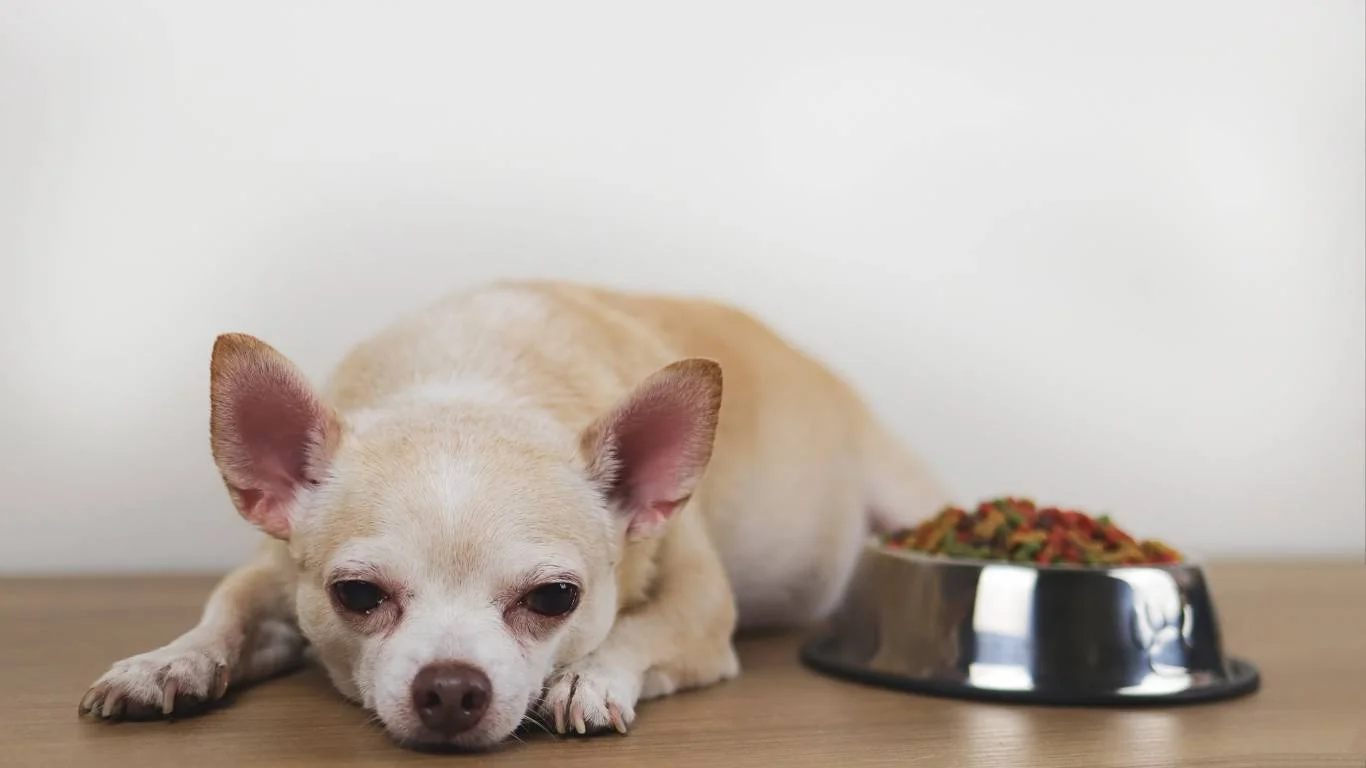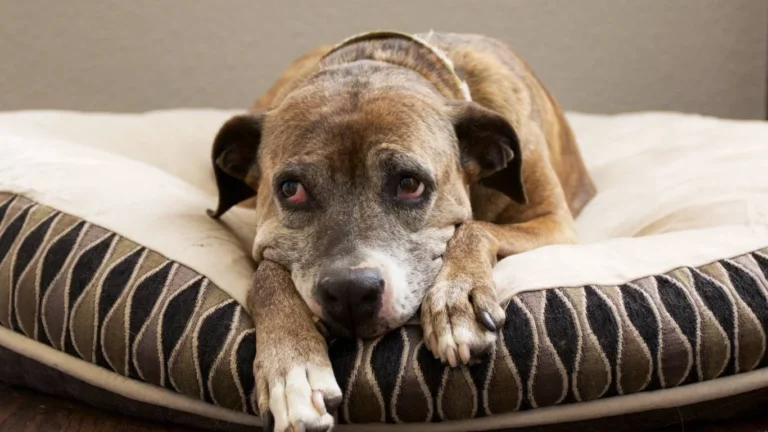How to Relieve Dog Constipation Quickly: Effective Tips
If your dog is having trouble going to the bathroom, it’s understandably stressful. As a Veterinary Assistant with a focus on nutrition, I’ve seen firsthand how much discomfort constipation can cause our furry friends. If your dog is struggling, you’re probably wondering, “How can I relieve dog constipation quickly?” Well, there are a few tried-and-true methods to help your dog feel better fast. In this post, I’ll share some easy-to-implement steps to help ease your dog’s constipation, tips on preventing it in the future, and when it’s time to call the vet for more serious issues.
What Causes Dog Constipation?
Before diving into how to relieve dog constipation quickly, it’s essential to understand what might be causing it. Constipation in dogs can happen for various reasons, and it’s not always just about diet. Here are a few of the most common culprits:
- Dehydration: Dogs who aren’t drinking enough water may struggle with constipation. Water helps soften stool and makes it easier for your dog to go.
- Low-Fiber Diet: A diet lacking in fiber can lead to hard, dry stools that are tough to pass. Fiber is essential for maintaining healthy bowel movements.
- Lack of Exercise: Just like us, dogs need movement to help stimulate their digestive system. If your dog is too sedentary, constipation may follow.
- Medications: Some medications can cause constipation as a side effect. If your dog is on a new prescription, it might be worth checking if it lists constipation as a side effect.
- Health Conditions: Sometimes, constipation can be a sign of an underlying health issue, such as anal gland problems or intestinal blockages.

How to Relieve Dog Constipation Quickly: Natural Remedies
When it comes to relieving dog constipation quickly, there are several natural remedies that I’ve personally recommended to pet owners in my experience. These methods are safe and effective for most dogs, though it’s always best to check with your vet first, especially if your dog’s symptoms don’t improve after a few days. Here’s a list of common remedies:
1. Increase Water Intake
The first step to relieving constipation is to make sure your dog is well-hydrated. Dehydration is a common cause of constipation, and adding more water to your dog’s diet is often an easy solution. Try these methods to encourage your dog to drink:
- Offer Fresh Water Frequently: Change the water bowl regularly, so your dog always has access to fresh water. Some dogs prefer cold water, so you might want to try adding some ice cubes to their bowl.
- Water-Rich Foods: If your dog isn’t drinking enough water, adding wet food to their diet or offering water-based treats (like ice cubes or homemade broths) can help.
2. Add Fiber to Their Diet
If your dog is constipated due to a low-fiber diet, adding fiber can make a world of difference. Fiber helps bulk up stool and promotes regular bowel movements. Here are a few fiber-rich options you can try:
- Pumpkin: Plain, canned pumpkin (not the spiced pie filling) is a go-to remedy. It’s packed with fiber and moisture, which can help ease constipation. Just add a tablespoon or two to your dog’s food, depending on their size.
- Sweet Potato: Cooked sweet potato is another fiber-rich food that can help. It’s also gentle on your dog’s stomach and easy to digest.
- Green Beans: A handful of green beans is not only low in calories but also a good source of fiber that can support digestion.

3. Exercise and Physical Activity
Just like humans, dogs need physical activity to help stimulate their digestive systems. Exercise gets things moving, helping food travel through the intestines more efficiently. A short walk or a play session in the yard can make a huge difference when it comes to getting your dog’s bowels moving again. Here are a few fun ways to encourage your dog to move:
- Daily Walks: Even a quick 10-15 minute walk can stimulate your dog’s digestive system.
- Interactive Play: Tossing a ball or playing tug-of-war can help get your dog’s body moving and relieve constipation.
When to See a Vet
While these remedies often provide quick relief, there are times when it’s important to get your dog checked out by a vet. If your dog’s constipation persists for more than a couple of days, or if they show other concerning symptoms like vomiting, lethargy, or a loss of appetite, it’s time to seek professional help. A vet can assess your dog’s condition and rule out any underlying health problems that may be contributing to the constipation.

In some cases, a vet may recommend further tests, such as an X-ray or blood work, to determine the cause of the constipation. Severe cases might require medications or other treatments to help relieve your dog’s discomfort.
Conclusion
Dealing with a constipated dog can be frustrating, but with the right care, you can help your furry friend feel better fast. Always remember to stay calm and consider the natural remedies we’ve discussed—most dogs will feel better after a bit of extra hydration, fiber, and exercise. And of course, when in doubt, don’t hesitate to contact your vet. They’ll be able to offer personalized advice for your dog’s unique situation.
Over-the-Counter Options for Relieving Dog Constipation
If natural remedies aren’t providing enough relief, or if your dog’s constipation seems a bit more persistent, you might want to explore some over-the-counter options. These are safe products that you can find at your local pet store or online, and they can be a great addition to your dog’s treatment plan. Here are some common over-the-counter options that I’ve personally used and recommended in my veterinary assistant experience:
1. Stool Softeners
Stool softeners are often the first step when addressing constipation in dogs. These products help to soften your dog’s stool, making it easier for them to pass. They’re typically available in oral form, and many are safe for long-term use if needed. The key is to make sure you’re using one specifically designed for pets, as human medications can be harmful.
Some popular stool softeners include:
- Docusate Sodium: A gentle option, it works by drawing moisture into the stool, which helps it pass more easily.
- PetMD Laxative: A pet-safe laxative that’s designed to relieve constipation while also providing fiber.

2. Fiber Supplements
If fiber-rich foods like pumpkin and sweet potato aren’t enough, you can try fiber supplements to give your dog’s digestive system the boost it needs. Many fiber supplements are designed specifically for dogs and can be a great way to manage their constipation without having to rely on prescription medication.
Here are a few fiber supplements to consider:
- Metamucil (Plain, Unflavored): While it’s a human product, Metamucil can be used for dogs in small doses. It’s important to consult your vet for the correct dosage based on your dog’s size.
- FortiFlora: A veterinary supplement that supports digestive health and can help regulate bowel movements.
- Probiotic Supplements: Adding a probiotic supplement to your dog’s diet can help balance gut bacteria, which can be beneficial for digestion and regularity.
When Home Remedies Aren’t Enough: Veterinary Solutions
If your dog’s constipation isn’t improving with diet changes or over-the-counter treatments, it’s time to think about professional veterinary care. I’ve had numerous instances where pet owners tried everything at home, only to find that their dog needed a little extra help from the vet. Here are some veterinary solutions that are available for dogs dealing with more severe constipation:
1. Enemas
In more severe cases of constipation, your vet might recommend an enema to help clear out your dog’s bowels. While this can be an uncomfortable procedure, it’s often very effective in providing immediate relief. There are special solutions that can be safely administered by a vet to break up hardened stool, allowing your dog to pass it more easily.
It’s important to never attempt an enema at home without professional guidance, as incorrect procedures can cause more harm than good.
2. Prescription Medications
If constipation persists and your dog is showing signs of discomfort, your vet may prescribe medications that are specifically designed to promote bowel movements. These medications can include:
- Lactulose: This is a commonly prescribed medication for dogs with constipation. It works by drawing water into the colon, which helps soften the stool.
- Prokinetic Drugs: These drugs help stimulate the muscles in the intestines, encouraging the movement of stool.

3. Surgery for Severe Cases
In rare cases, constipation can lead to serious complications like intestinal blockages or impacted stools. If your dog has been suffering from chronic constipation or if the problem is extremely severe, surgery may be necessary to remove the blockage or impacted stool. While this is usually a last resort, it’s important to address the issue quickly before it leads to more serious health problems.
If your dog requires surgery, your vet will walk you through the process and give you a clear understanding of the risks and recovery plan.
Preventing Constipation in Dogs
While it’s important to know how to relieve dog constipation quickly, the best solution is always prevention. Preventing constipation in the first place is much easier than treating it once it’s become an issue. Over the years, I’ve learned that small lifestyle changes can make a big difference in your dog’s digestive health. Here are some tips to help prevent constipation:
1. Maintain a High-Fiber Diet
As we’ve mentioned earlier, fiber is essential for maintaining regular bowel movements. A balanced, high-fiber diet not only supports digestion but also helps prevent constipation from occurring in the first place. Be sure to provide your dog with a mix of fiber-rich foods like pumpkin, sweet potato, and vegetables.
2. Ensure Regular Exercise
Exercise is critical to your dog’s overall health, including their digestive system. Regular walks, playtime, and physical activity stimulate the intestines, making it easier for your dog to pass stool. Even if your dog has limited mobility, gentle stretching and movement can help keep their digestive system working properly.

3. Hydration is Key
Always keep fresh water available for your dog, and consider adding water-rich foods to their diet. Some dogs, especially those on dry kibble, may not drink enough water, which can lead to constipation. You can encourage your dog to drink by offering ice cubes, adding low-sodium broth to their meals, or switching to wet food.
4. Avoid Stressful Changes
Dogs are creatures of habit, and sudden changes in their environment or routine can cause stress, which might affect their digestive system. Try to keep their feeding schedule, exercise routine, and environment as consistent as possible to avoid unnecessary stress that could lead to constipation.
Preventing constipation isn’t always foolproof, but these steps can certainly reduce the risk. A healthy diet, plenty of water, regular exercise, and a stress-free environment can make all the difference in keeping your dog’s digestive system running smoothly.
Common Mistakes to Avoid When Trying to Relieve Dog Constipation
While we’ve covered a lot of ground on how to relieve dog constipation quickly and how to prevent it, there are a few common mistakes that pet owners often make when trying to tackle this issue. I’ve seen these missteps time and time again in my role as a Veterinary Assistant, and I want to help you avoid them so your dog can get back to feeling great. Let’s take a look at the things you should avoid when dealing with dog constipation:
1. Ignoring Symptoms for Too Long
One of the biggest mistakes I see is pet owners waiting too long to take action. If your dog has been constipated for more than a couple of days, it’s time to start addressing the problem. While mild constipation can be treated at home with diet changes, hydration, and exercise, leaving it untreated for too long can lead to more serious complications. I’ve had a number of clients bring in their dogs after they’ve been constipated for weeks, and in some cases, it was too late to avoid needing professional intervention.
2. Overusing Laxatives
Laxatives can be an effective tool for relieving constipation, but they should be used sparingly. Overuse of laxatives can lead to dependency, where your dog’s body starts to rely on them to have a bowel movement. This can result in even worse constipation over time. Always follow the dosage instructions on the product and consult your vet if you’re unsure about using a particular laxative or stool softener.
3. Focusing Only on Short-Term Relief
While it’s tempting to focus solely on getting your dog to relieve themselves quickly, don’t overlook the long-term solutions. Diet, hydration, and exercise are key to preventing future bouts of constipation. It’s easy to be caught up in the urgency of helping your dog feel better in the moment, but remember that consistent care is what will keep them regular in the future. A balanced approach is essential for long-lasting digestive health.

When Should You Contact Your Veterinarian?
If you’ve tried several at-home remedies and your dog’s constipation isn’t improving, it might be time to get a vet involved. As a veterinary assistant, I’ve worked with many pet owners who were unsure of when to reach out for professional help. Here are some red flags that indicate you should contact your vet:
1. Vomiting and Loss of Appetite
If your dog is constipated and also vomiting or refusing to eat, this could indicate that the constipation has become more serious. It may be a sign of an intestinal blockage or another underlying health issue that needs immediate attention.
2. Painful Bowel Movements
If your dog is straining excessively or crying out in pain when trying to defecate, don’t ignore it. This could mean that your dog’s constipation is severe, or they may have an anal gland issue or injury that’s causing them pain. A visit to the vet will help you get to the root of the problem.
3. Bloody Stool or Diarrhea
Bloody stool or diarrhea is never a normal sign, especially when it occurs alongside constipation. This could indicate that your dog has an infection, parasite, or other serious gastrointestinal issue that needs a vet’s attention.
4. No Improvement After Several Days
As mentioned earlier, mild constipation can often be treated at home with natural remedies. However, if your dog’s symptoms persist for more than a few days, or if they seem to be getting worse, it’s important to get professional help. Persistent constipation can lead to impaction or other complications that require medical intervention.
References
If you’re looking for more information about dog constipation and general pet health, these trusted sources can help provide additional insights:
- PetMD – Your Pet’s Health
- American Kennel Club – Dog Health Information
- National Institutes of Health
- Health – Trusted Health Resources
Disclaimer
While the advice and remedies provided in this article are based on my personal experience as a Veterinary Assistant with a focus on nutrition, it’s important to remember that every dog is unique. What works for one dog may not work for another, so it’s always best to consult with your veterinarian before implementing any treatments, especially if the constipation is severe or persistent. The information provided here is meant for educational purposes and is not a substitute for professional veterinary care.






